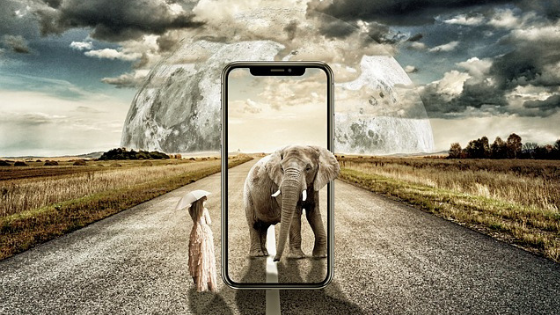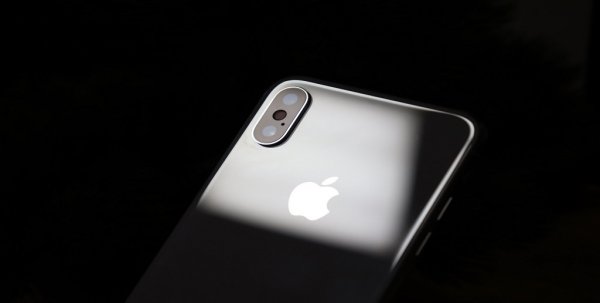Which smartphone to choose to take pictures: which is the best camera mobile? Here is the guide to the models to buy between Apple, Samsung and Huawei.

Choosing a smartphone involves the analysis of many details, and among these the camera certainly cannot be missing: single, double and triple, choosing the best device to buy, considering the quality of the photos taken, can be a difficult decision.
Which is the best camera mobile? Which smartphone should we buy in order to have incredible quality photos to share on Facebook and Instagram? Answering these questions is not simple and in the purchase phase knowing which smartphone has the best camera could be crucial in choosing your device.
Here is a quick overview of smartphones with the best camera, divided by model and features.
Smartphone with best camera: Huawei P30 Pro
Huawei P30 and P30 Pro officially arrived in late March and their triple and quadruple rear camera are perhaps the best choice among smartphones currently on sale, from a photographic point of view.
Huawei P30 has a triple rear camera with 40, 16 (wide-angle) and 8 (telephoto) megapixel sensors. The P30 Pro goes even further, adding a fourth sensor positioned below the LED flash that allows up to an optical zoom of up to 10x, together with the three cameras pushes the digital zoom up to 50x for extremely detailed photos even under the long distance.
P30 Pro also opts for a reading of colors from RGB to RYB, which replaces green with yellow, to obtain better shots even in the darkest light conditions. Huawei P30 and P30 Pro are in fact almost unparalleled in the dark photos, making the Chinese smartphone one of the best devices available on the market to shoot and record video in low light conditions.

Huawei P20 Pro
Even Huawei P20 Pro is still a great smartphone from the photographic point of view: the camera is equipped, for the front part, of three sensors by 40, 20 and 8 megapixels with a from well 24 megapixel front.
In photo mode the smartphone excels when there is little light thanks to the excellent combination of the sensors: the innovative three-way system allows the first two objectives to devote themselves to colors, for the first, to whites and blacks, for the second while the third lens provides a pretty good support for the 3x zoom without sacrificing the quality usually imposed by digital zoom. The price of the Chinese top of the range is also now falling sharply thanks to the departure of its successor, but not so much as not to justify the purchase.

Huawei Mate 20 Pro
Considered the big brother of the previous P20 model, Huawei Mate 20 Pro has only recently entered the market and has immediately captivated users. The merit? The excellent shots obtained through the elegant triple rear camera, which encloses the sensors in an elegant square, equipped with Leica lenses.
The Mate 20 Pro’s three cameras give their best with the panoramic effects, data from the super wide-angle able to embrace a wide angle of the frame, and the macro shots that analyze surprising details for a smartphone. The portrait mode, given by the front 24-megapixel sensor, is considered one of the best ever seen on mobile: if selfies are your passion, Mate 20 is definitely the choice to make.

iPhone Xs/Xs Max
If Android really isn’t for you, and you love Apple’s iOS ecosystem, then the choice to make necessarily falls on the latest top of the Cupertino range: iPhone Xs and Xs Max.
Despite a lower number of megapixels and a price well above the market average, factors that not only hamper the immediate purchase of the new iPhone by, the iPhone Xs camera is undoubtedly a gem and confirms the new line taken by Apple with the X models The 12 megapixel dual sensor, with a focal length of f/1.8 for the first and f/2.4 for the second, offers impressive optical stability with natural colors and a telephoto lens that helps capture details even at a greater distance than to other competitors on the market. Added to this are two new features, Smart HDR and Depth Control and a simple and intuitive portrait mode that remains one of the best on a mobile level.

Samsung Galaxy S10 and S10 Plus
Samsung Galaxy S10 and S10 Plus have partially rewritten the concept of mobile photography compared to the previous model Galaxy S9: the new device hosts three rear cameras of identical configuration for both models, with a triple-lens optic characterized by a sensor of 12MP, optical stabilization, f/1.5-f/2.4 variable aperture, 12 MP telephoto lens with f/2.4 aperture and 2X optical zoom, and 16 MP wide-angle lens with f/2.2 aperture.
To make the difference is the front camera, the one for selfies, contained in the special hole of the beautiful Infinity-O screens: single 10 MP on 10 and double in S10 Plus with a 10 MP main sensor with f/1.9 aperture and Dual Pixel autofocus and 8 megapixel secondary sensor with f/2.2 aperture.
Improved yield in low light conditions compared to the predecessor and the possibility to take ultra-wide pictures thanks to the very wide field of view given by the wide angle.

Samsung Galaxy S9 Plus/Galaxy Note 9
Until recently, it was one of the best cameras for smartphones: Samsung Galaxy S9 Plus and Samsung Galaxy Note 9 have the same dual camera, which remains excellent despite having been overtaken by rival Huawei.
These models represent a novelty for Samsung: it is the first time that the South Korean company opts for a dual camera, with two 12 megapixel sensors. The first camera, with an f/1.5 focal length, is phenomenal in low light conditions and for night shots. The portrait mode is also excellent, which is the same with an equally excellent video mode, and a decidedly lower price than the competition (thanks to the countless offers). The Samsung Galaxy Note 9 stylus is also equipped with a small button, to be pressed when we want to apply the countdown for a self-timer.

One Plus 6T
The best quality/price compromise: One Plus 6T is in fact equipped with two cameras, 16 and 20 megapixels, with a remarkable focal length f/1.7 able to guarantee excellent shots. Compared to last year’s model, the 5T, One Plus has increased the capacity of the main sensor by 19%, guaranteeing excellent shots even in low light conditions.
With the upgrade of the night mode, criticized in the past, One Plus 6T certainly represents the best choice for price-conscious users, who want to have an excellent mobile camera without spending the compromise of spending too often too high.

Google Pixel 3
Special mention for Google Pixel 3, which with just one rear camera is able to offer the best images among smartphones without dual cameras. Exceptional zoom, 8 megapixel front sensor and 12.2 megapixel rear, excellent night mode that also beats that of Huawei Mate 20 Pro (despite the triple camera).
![]()
The Pixels are not yet a real market success, but the latest model from Google represents the best choice given the limits of a smartphone that subverts, in some way, the rules of mobile photography: to be taken if you are looking the smartphone with the best single camera.
